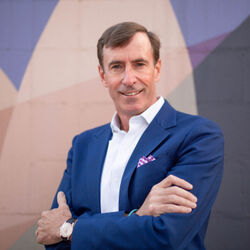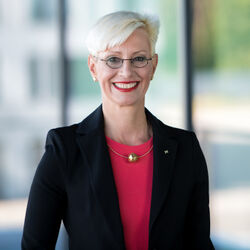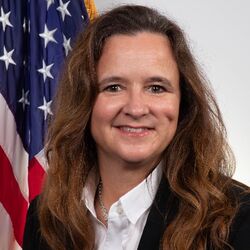Small Satellites Solving Climate Challenges
Day: Tuesday 26 October
Time: 08:30-09:30 GST
Location: Sheikh Rashid Hall E, Dubai World Trade Centre
While climate change presents the greatest threat to humanity, there is an arsenal of tools to be leveraged allowing us to fight it. The green transition must be complemented by the continued use and improvement of modern technologies. Small sattelites, for example, can be used to monitor climate change, help with governments’ response to climate change, and track the progress of that response. Satellite instruments can precisely measure global sea levels, and track the presence of carbon dioxide, methane and other greenhouse gases. Optical satellites can monitor extreme weather events by observing sea surface temperatures, wind speed and sea levels. Radar imagery and altimetry monitoring sea ice, polar ice caps, ice sheets and glaciers have told us that polar ice caps in Greenland and Antarctica are melting six times faster now than in 1990s.
Since satellites were first used for meteorology in the 1960s, the space sector has continued to innovate, surpassing its capabilities from one year to the next. The improvement of both optical and temporal resolutions of satellites has led to real time monitoring and better climate forecasting and modelling abilities. Beyond the space sector, satellite data can be used for research, such as training data for machine learning applications, and development, enabling the discoveries of new tools to fight climate change. For example, geospatial data will be a fundamental resource for Destination Earth (DestinE), the European Commission project to develop a very high precision digital model of the Earth to monitor and simulate natural and human activity. Among space technologies, Earth observation, also known as earth imaging, allows us to see every feature of the biosphere. Over the last decade, we’ve entered the era of the “Space Renaissance,” a rebirth of space activities that are accelerating innovation. Agile aerospace—a philosophy of spacecraft development that encourages rapid iteration—was largely just a thought-kernel in the minds of aerospace experts 10 years ago, and now dramatically changing the capabilities from space, including increasing the number of EO satellites by 10x and data rates commensurately, enabling the powering of new smarter and more efficient systems.
Climate change is real and it is already happening. It has already been proven to increase the risk of floods and extreme rainfall, heatwaves and wildfires with implications for humans, animals and the environment. And things aren't looking good for the future either. With the concentration of carbon dioxide (CO2) in the atmosphere projected to maintain an average 411 parts per million (ppm) throughout 2019, there is a long way to go before the ambitious goals of the Paris Agreement or the European Green Deal are met. To put this into context: atmospheric CO2 hovered around 280 ppm before the start of the Industrial Revolution in 1750 – the 46 per cent increase since then is the main cause of global warming. Reliable temperature records began in 1850 and our world is now about one degree Celsius hotter than in the “pre-industrial” period. The Paris Agreement focuses on keeping the global temperature rise in this century to well below two degrees Celsius above pre-industrial levels – ideally to 1.5 degrees Celsius – to avoid “severe, widespread and irreversible” climate change effects. But, if current trends continue, the world is likely to pass the 1.5 degrees Celsius mark between 2030 and 2052 unless it finds a way to reach net zero emissions.
Given that there is an urgency to act, this plenary addresses the fact small satellite systems should be considered as an important tools in meeting the global climate objectives. Earth observation must be continued to be recognised as a strategic area in combating sustainability and climate change. All day every day, constellations of satellites rotate around the Earth taking pictures of the same areas to allow for monitoring over-time. In addition to public endeavors such as the Landsat and Copernicus programs, slam satellite industry plays a vital role adding cadence and resolution to the “picture”. Earth observation is a key tool for the implementation of the global climate goals as it sees everything from crop health to reef degradation. Indeed, satellite imagery can be leveraged across sectors and produce valuable and unique information that remains unseen from one’s feet on the ground.
Given the timeliness and importance of the topic, the panelists will address the full spectrum of legal, policy, economic, and technical aspects of the role small satellites can plan in the domain of climate change - giving a truly global perspective. International panelists representing both private and public space sector will discuss a spectrum of views on effective cooperation in addressing the long term sustainability/climate objectives.
This plenary is organized by the IAF Industry Relations Committee and has been formulated to address the congress industry theme “INSPIRE, INNOVATE & DISCOVER FOR THE BENEFIT OF HUMANKIND”, as it will demonstrate that in order for the humanity to take care of the planet Earth, space technology and space applications coming from small satellites are an important and innovative tool to benefit all humankind.




